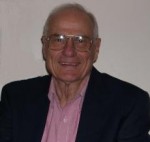Smoke hard to avoid at Castleton
It’s difficult to walk to class these days without seeing at least one student squeezing in a cigarette on the way to class or on the walk between classes. Its prevalence is even more noticeable with a quick downward glance around the fronts of residence halls where hundreds of cigarette butts dot the pavement.
Smoking not only harms those who puff on their way to class in the morning, it also affects those around them. But some students say they aren’t bothered by their fellow students who smoke.
“People who smoke do it by their own choice. Even if I don’t agree with it, it should be respected,” Junior Seth Tuper said.
As an off campus resident, junior Seth Bronson feels similarly, but one thing that does annoy him are the remnants smokers leave behind.
“It bothers me that some people who smoke don’t have decency to pick up their butts,” he said.
Why smoke?
There are many different reasons why college students smoke. For some it’s part of a social habit while for others it’s a way to deal with stress in their every day lives.
David Frederick, a first semester senior at Castleton began smoking when he was 15. He quit when he was 17, but a simple social situation drew him back in.
“I was at the Pickle Barrel, and I couldn’t drink, so a grabbed a cigarette,” said Frederick. “Smoking is more of a social thing for me. It gives me something to do between classes, and in the break room at work.”
Despite his past education and his knowledge that he is not doing his body any good by smoking, he continues because “I figure if I’m not doing that, I could be doing something else bad for me like drinking tons of coffee.”
Junior Jen Barber picked up smoking for a different reason.
“I started smoking near the end of 2004. I was going through a bad break-up, and I needed a crutch,” Barber said, with a little smile.
Unlike some, Barber has no plans of being a life-long smoker.
“I plan to quit. I work at a summer camp where I can’t smoke. After two months without one, I’ll be well on my way,” she said.
Qutting help
College students have been exposed for at least half their lives to education about the harms of smoking, yet many smoke regardless. For those, like Jen Barber, who want to quit, but who may not have a plan, there is help on campus. Health services at Castleton offers clinics to help students and staff who are ready to quit.
Anita Larson, a Castleton alumnus and current employee of 15 years, spearheads the Smoking Cessation clinics here at Castleton
“Anita came to me with the idea to start a support group for students here. She was very passionate about it,” said Larson’s partner in the clinics, Lisa Kellogg. In light of the success of the Weight Watchers groups that are going into their second year on campus, Larson wanted to help students improve their health in other ways. The idea to tackle smoking was inspired when her office moved from the gym to the Academic Support Center on the first floor of Babcock Hall.
“I never noticed students smoking around the gym. It wasn’t till I moved to where I am now that I noticed how many students smoke. It made sense; students are more likely to smoke near where they live,” she said.
It was then that Larson decided she wanted to do something about it.
Kellogg and Larson offer a six-week support program for smokers that wish to begin the quitting process.
“We try to help prepare those that attend for what they will face, like the withdrawals, and then help them find a way to overcome those struggles,” said Kellogg.
The groups meet once a week, giving members of the Castleton community tools to prepare to kick the addiction. One thing they stressed, however, is that this program is not designed for them to dictate each participants quitting schedule or date, only to help them reach that final destination.
“The quit date is up to the individual,” Kellogg said. “We just give them the tools to reach their goal, regardless of their personal timetable.”
In the last series of clinics they offered, Larson and Kellogg were greeted with only minimal participation, just four students. But they aren’t at all discouraged by the small numbers.
“We look at it as an improvement. The first time we offered the program only two people came,” Larson said.





